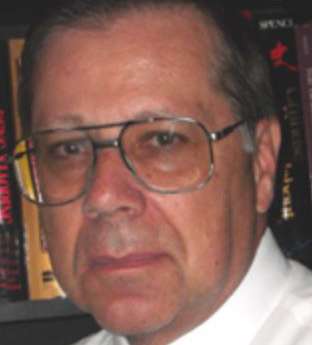
By JOHN RICHARD SCHROCK
Our latest NAEP science scores show our fourth grade declined another two points while average science scores for the 8th and 12th grade showed no change from our abysmally low performance. Science literacy in the United States has declined for over 40 years. Meanwhile the rest of the developed nations have increased their science course requirements and moved dramatically ahead. A country cannot just rely on training a few scientists. The level of science knowledge in the whole population is critical. This became very obvious this last year as the pandemic revealed widespread ignorance.
BBC and DW broadcast “R” values that described the rate of contagion and their British and German audiences understood. Britain is training elementary teachers to be specialists in science in the early grades. German citizens learn enough human anatomy and physiology to self-refer themselves to a specialist doctor. The U.S. lost our lead in authors of science journal articles in 2017. We no longer are the leading country in international patents as of 2019.
In 1978, nearly 40 percent of the world’s scientists and engineers lived in the U.S. Today that number is under 15 percent. Over half of the science and engineering graduates working in America today are from other countries. We used to buy many of our scientists from abroad, but now their home economies have grown and ours has not.
The Astrazeneca vaccine was developed at Oxford University. The Pfizer-BioNTech is from Germany. Today’s atomic accelerators, nuclear fusion research, cutting-edge astronomy, new surgical procedures, and a wide range of chemical and biology breakthroughs are now in other countries.
International tests confirm our educational weakness. The Programme for International Student Assessment (PISA) science test has mostly Asian countries at the top. Canada ranks 10th. The U.S. is 32nd. Since general public science literacy as well as scientist production are the core problem, the solution requires increasing science coursework in American K–12 by over three-fold.
1–Currently, high school graduates in Asian countries have taken more science coursework and know more science that American elementary teachers graduating from college. We must triple the science current prospective elementary teachers take in college, to include hands-on lab and field activities that can be conducted in their classrooms.
2–Just as there are specialty art and music teachers, there should be specialty elementary science teachers with a minimum of 32 college science credit hours including real labs.
3–Instruction must return to face-to-face with real lab and fieldwork. To use screen media instead reduces comprehension, requiring 14 years to accomplish 12 years of genuine education.
4–High school graduation requirements must include three times more science. Everyone takes a full year course in human anatomy and physiology (not a “health” course). Other courses include a zoology/botany/ecology course, earth science (ES), chemistry and physics. This adds math requirements.
5–Only eleven states currently require secondary science teachers to specialize in biology or chemistry or physics or ES. The rest train one-size-knows-little all-purpose science teachers barely educated to teach middle school science. A minimum of 50 credit hours of coursework (with lab/field) is necessary for biology, and 36 credit hours for the other science fields. These are science courses taught in science departments at university level, not educational methods courses that change every few years.
6–Because many states have failed to consolidate their schools, they are too small to provide their students with modern facilities. Many states must hub to consolidated high schools that can accommodate a modern curriculum and specialist teachers in all fields, not just science.
7–Expanding the science curriculum by three times requires three times more qualified science teachers, a longer school day and school year. While we currently have some dedicated science teachers, we do not currently have enough qualified science teachers to teach our anemic requirements. We will have to hire related scientists and even import teachers. But “permit” teachers who lack full academic qualifications must remain acknowledged as “temporary.”
8–Because new science occurs after a new teacher graduates, in-service is vital for these teachers to keep up. This involves hands-on work with new technology and cannot be delivered online.
9—And finally, the U.S. must immediately switch to the metric system and abandon our non-metric complexity that handicaps American students in the physical sciences.
It took us decades to become science illiterate. I will take decades to regain what we have lost. Meanwhile, the rest of the world is moving ahead.
. . .
John Richard Schrock has trained biology teachers for more than 30 years in Kansas. He also has lectured at 27 universities in 20 trips to China. He holds the distinction of “Faculty Emeritus” at Emporia State University.





